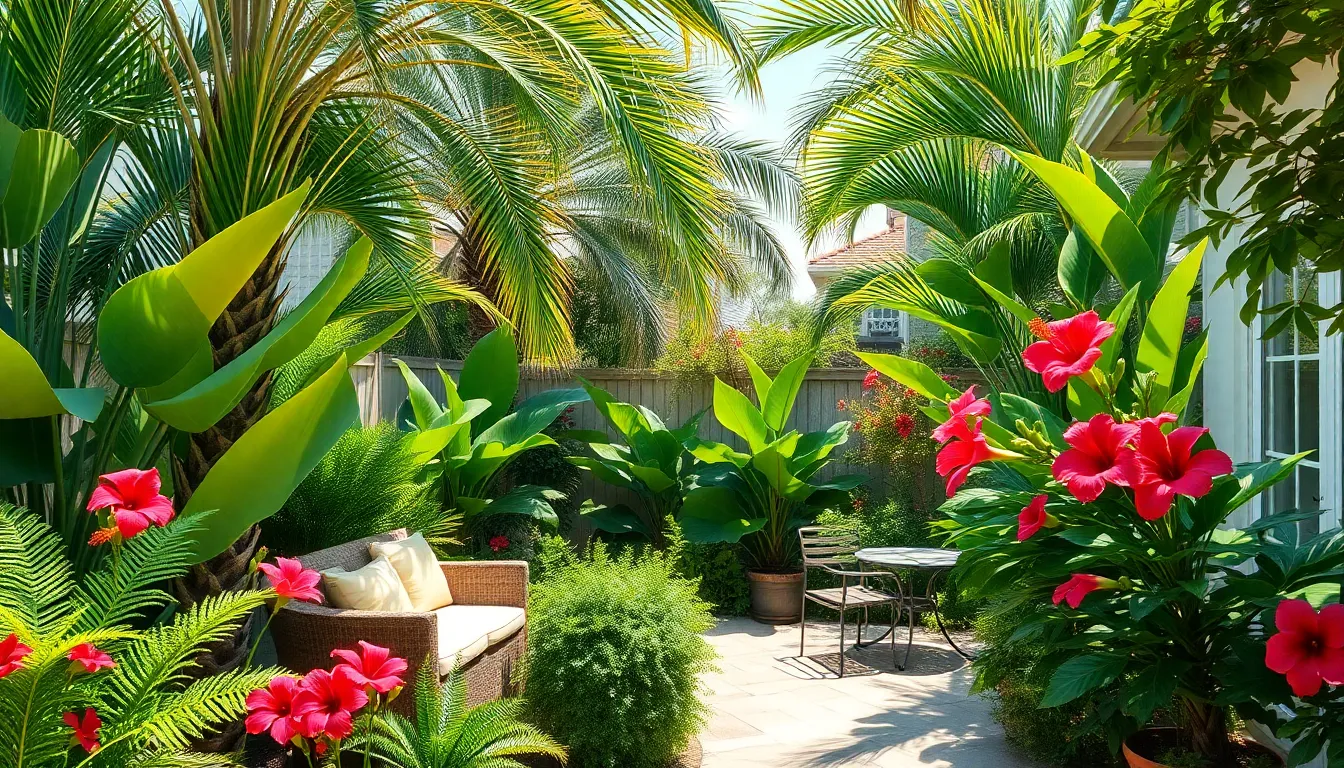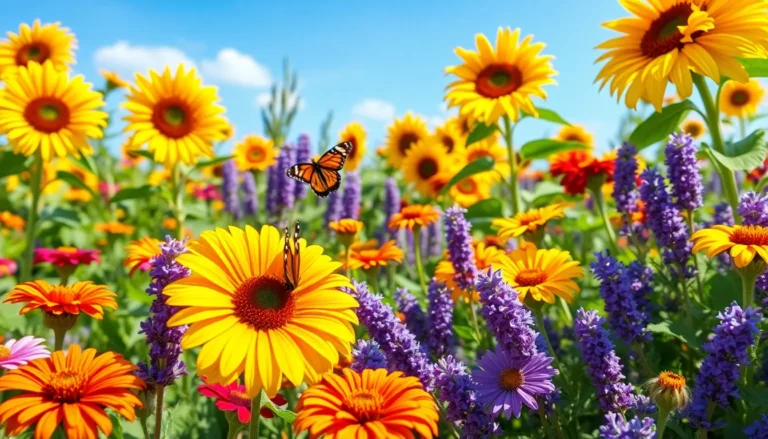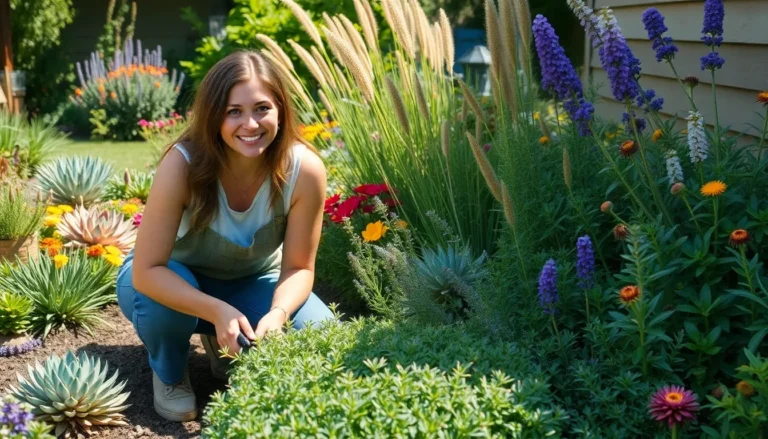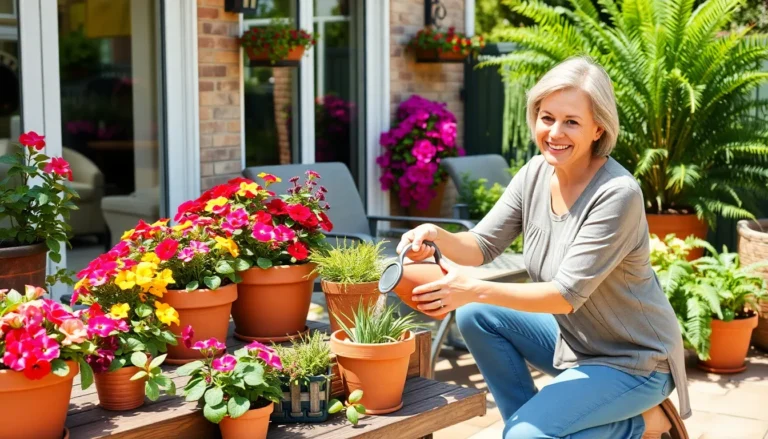Imagine transforming your backyard into a lush oasis where even the neighbors might feel a twinge of envy. Large outdoor plants are the unsung heroes of landscaping, bringing drama and elegance without breaking a sweat. Whether it’s a towering palm or a vibrant hibiscus, these botanical giants can turn any mundane space into a breathtaking retreat.
Large Outdoor Plants
Large outdoor plants contribute significantly to the visual allure of any garden. These plants include varieties such as palms, ferns, and tropical blooms that enhance landscaping. Their size creates focal points, drawing attention and admiration from passersby.
Palms excel in providing a tropical look, often serving as the centerpiece in backyard designs. Their tall stature and feathery fronds bring a sense of tropical elegance. Ferns also play a vital role, adding lush greenery and intricate textures to garden spaces.
Vibrant flowering plants like hibiscus create stunning bursts of color. With proper care, these plants thrive outdoors and flourish in sunlight. Their blossoms can dramatically enhance gardens, blooming from spring to fall in various shades.
In addition to aesthetics, large outdoor plants offer shady spots and habitat for local wildlife. They can attract butterflies and birds, fostering a vibrant ecosystem. Some varieties also work as natural privacy screens, ensuring intimate outdoor spaces.
Maintenance strategies vary based on plant types. Grouping plants with similar watering and sunlight requirements ensures healthy growth. Seasonal pruning enhances structural integrity while encouraging new growth and blooms.
Incorporating large outdoor plants transforms backyards into lush retreats, making spaces feel more inviting. Choosing the right plants involves considering climate, soil type, and overall garden design. Combining these elements creates a harmonious outdoor environment that captivates and inspires.
Types Of Large Outdoor Plants
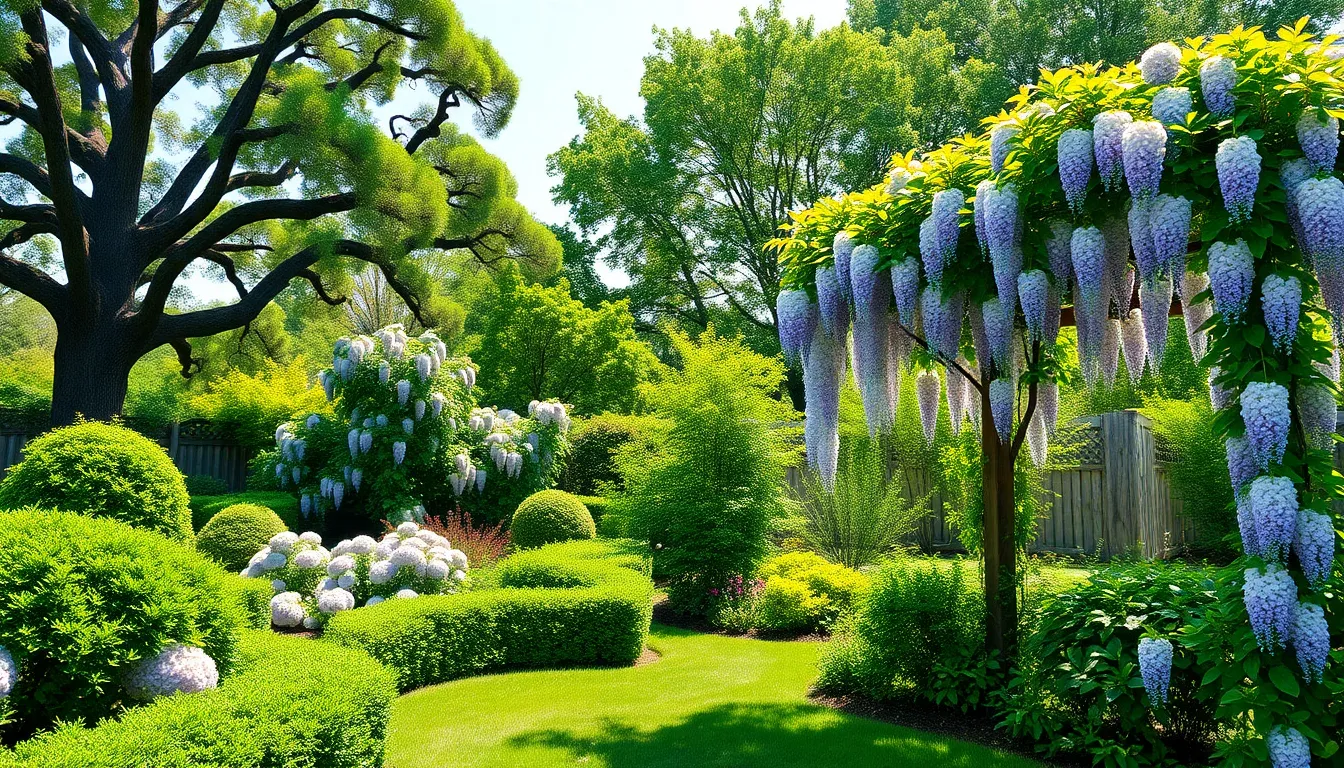
Large outdoor plants can significantly enhance landscapes. They provide visual interest, shade, and habitat for wildlife.
Trees
Trees are a defining feature in any landscape. Varieties like oak, maple, and magnolia offer towering heights and robust canopies. They create cool shaded areas perfect for relaxation. Additionally, deciduous trees provide vibrant fall colors, while evergreens maintain their leaves year-round. Large trees support diverse wildlife, attracting birds and insects. Planting them in appropriate locations ensures ample room for growth and maximizes their visual impact.
Shrubs
Shrubs add structure and depth to outdoor spaces. Varieties like rhododendron, hydrangea, and boxwood serve different aesthetic purposes. Rhododendrons produce large, vibrant blooms, while hydrangeas offer impressive clusters in various colors. Boxwoods provide a classic, evergreen look that can be shaped to fit any garden design. These shrubs often function as natural privacy screens when grouped strategically. Proper spacing allows airflow and promotes healthy growth, maintaining lush greenery.
Vines
Vines contribute stunning vertical appeal in outdoor settings. Species such as wisteria, climbing roses, and passionflower thrive when climbing on trellises or fences. Wisteria cascades beautifully, creating a breathtaking focal point during blooming seasons. Climbing roses offer fragrant, colorful displays that attract pollinators. Passionflower adds a unique touch with its intricate blooms and leaves. Supporting structures provide stability, allowing these plants to flourish while beautifying spaces.
Benefits Of Large Outdoor Plants
Large outdoor plants significantly enhance both beauty and functionality in landscaping. They create a dynamic focal point in any garden setting, inviting admiration from passersby and guests.
Aesthetic Appeal
Large outdoor plants provide striking visuals throughout the year. Towering palms add an exotic flair while offering symmetry and balance in garden designs. Vibrant flowering plants like hibiscus inject color into landscapes, drawing attention with their dramatic blooms. Ferns introduce varied textures, complementing other plants and creating visual depth. In addition, different shapes and sizes among large plants cultivate contrast and interest in outdoor areas, enriching the overall aesthetic.
Environmental Impact
Large outdoor plants contribute positively to local ecosystems. They offer essential shade, lowering temperatures in backyards and reducing energy costs for nearby structures. Additionally, these plants provide habitat and food sources for beneficial wildlife, including pollinators and birds. Natural privacy screens formed by dense shrubs or trees promote biodiversity in urban areas. They also improve air quality by absorbing pollutants and carbon dioxide, making them vital for a healthier environment.
How To Care For Large Outdoor Plants
Caring for large outdoor plants involves understanding their specific needs. Providing adequate attention ensures healthy growth and vibrant aesthetics.
Watering Needs
Large outdoor plants require consistent watering routines tailored to their species. Established plants often demand deep but infrequent watering, promoting deeper root growth. Adjusting the frequency based on weather conditions helps prevent overwatering or drought stress. Monitoring soil moisture is crucial; when the top inch feels dry, it’s time to water. Using mulch around plants aids in moisture retention and reduces evaporation. Grouping plants with similar watering needs simplifies irrigation and enhances efficiency.
Pruning Techniques
Pruning large outdoor plants enhances their shape and encourages healthy growth. Timing is key; pruning should occur during the dormant season for most species. Removing dead or diseased branches prevents pests and diseases from spreading. Cutting back overgrown areas helps maintain an attractive appearance and encourages fuller foliage. Using clean, sharp tools ensures smooth cuts and minimizes stress on the plant. Always follow proper techniques for each type of plant to foster robust health and vitality.
Conclusion
Large outdoor plants can truly transform any backyard into a stunning oasis. With their ability to provide shade and attract wildlife they serve multiple purposes beyond mere aesthetics. By carefully selecting and maintaining these plants gardeners can create a vibrant and inviting space that stands out.
The right combination of trees shrubs and flowering plants not only enhances visual appeal but also contributes to a healthier environment. Embracing these green giants allows for a dynamic landscape that evolves with the seasons. Ultimately large outdoor plants bring life and character to outdoor spaces making them essential for anyone looking to elevate their garden experience.

